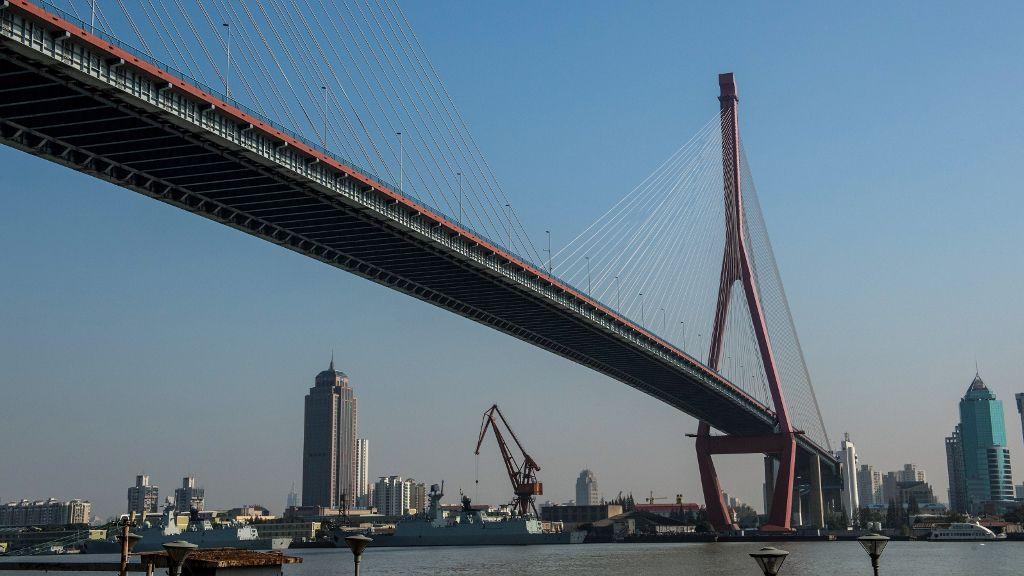Asia will need to spend much more on infrastructure than previously planned, according to a major report from the Asian Development Bank.
Infrastructure needs in Asia and the Pacific will exceed US$22.6 trillion through 2030, or US$1.5 trillion per year, according to the Asian Development Bank (ADB). These rise to over US$26 trillion, or US$1.7 trillion per year, when climate change mitigation and adaptation costs are included.
East Asia – driven by China – accounts for 61% of projected investment followed by South Asia, which accounts for about a quarter of total needs.

The report, Meeting Asia’s Infrastructure Needs, has a wide remit covering the region’s power, transport, telecommunications and water and sanitation infrastructure, but the problems for the transportation sector are made clear.
“Many economies in the region lack adequate ports, railways and roads that could connect them efficiently to larger domestic and global markets,” the ADB said without mentioning specific pieces of hardware.
What it does make clear is transport infrastructure will take close to a third of the climate-adjusted investment, with needs of US$8.4 trillion. Of this, the majority will be climate-proofing investments preparing infrastructure for the impact of the climate change, such as higher sea levels and extreme weather.
“This can be done by measures such as elevating road embankments, relocating upstream water intake and treatment works, and enhancing design and maintenance standards,” the report said. As well as building new infrastructure, existing facilities will need some substantial reworking.
The transport sector is also important for mitigating climate change through shifts from more carbon-intensive modes of travel – private cars – to less carbon-intensive modes including public transit and railways, the report said. These goals, the ADB added, can be achieved by “regulation and policy.”
These figures are also a substantial increase on what had been previously estimated by the ADB, among others. “The US$1.7 trillion annual climate-adjusted estimate is more than double the US$750 billion ADB estimated in 2009,” it said.
The increase is partly explained by the inclusion of climate-related investments, continued rapid growth forecasts for the region and including all 45 ADB member countries against 32 in the 2009 report, as well as the use of 2015 prices versus 2008 prices.
Although 25 core Asian countries – with 96% of the region’s population – are investing enough to reach the outdated figure, the region falls well short of meeting the higher projection. China leads the way with a gap of just 1.2% of GDP in the climate-adjusted scenario. Without China, the gap rises to a much higher 5% of the remaining 24 economies’ projected GDP.
The ADB suggests that the infrastructure costs are best met by public-private partnerships, a potentially dramatic shift from what is the region’s current norm, where public sector finances pay for 92% of infrastructure investment.
Public finance reforms could generate additional revenues estimated to bridge around 40% of the gap for these 24 economies, the ADB said, noting issues of tax reform and spending reorientation. The latter includes ending energy subsidies.
Among the innovations it outlines for consideration are different models of “land value capture,” which has worked well enough in Japan, South Korea and China, selling brownfield assets and auctioning concessions, and allocating proceeds to finance greenfield infrastructure. “At the same time, other actions, like setting user charges for infrastructure services with greater regard to cost recovery will also help,” the report added.
However, it acknowledged that for the private sector to fill the remaining gap it would have to increase investments from about US$63 billion today to as high as US$250 billion a year during the 2016-2020 period.
“As the private sector is crucial to fill infrastructure gaps, ADB will promote investment-friendly policies and regulatory and institutional reforms to develop bankable project pipelines for public-private partnerships,” said ADB president Takehiko Nakao.
That’s the starting point, and while the bank advocates what is effectively wholesale change, it is aware there are many potential roadblocks in the path of reform.
“However, to meet their potential, PPPs need to be structured within a regulatory and institutional environment conducive to private investment and better project preparation capabilities that generate a robust pipeline of bankable PPP projects,” the report said, citing the Philippines as an example of what can be done.
Nor is it a standalone although the reforms in other economies in the region to encourage private participation are best described as piecemeal.
India strengthened its policy framework by issuing a PPP toolkit, guidance papers and enhanced selection procedures, while Indonesia, China, Bangladesh and Pakistan amended policies to streamline procurement and bidding processes. Papua New Guinea, Thailand and Vietnam have refined alternative dispute mechanisms by including mediation and arbitration procedures, the report noted.
By Michael Mackey
Southeast Asia Correspondent | Bangkok



